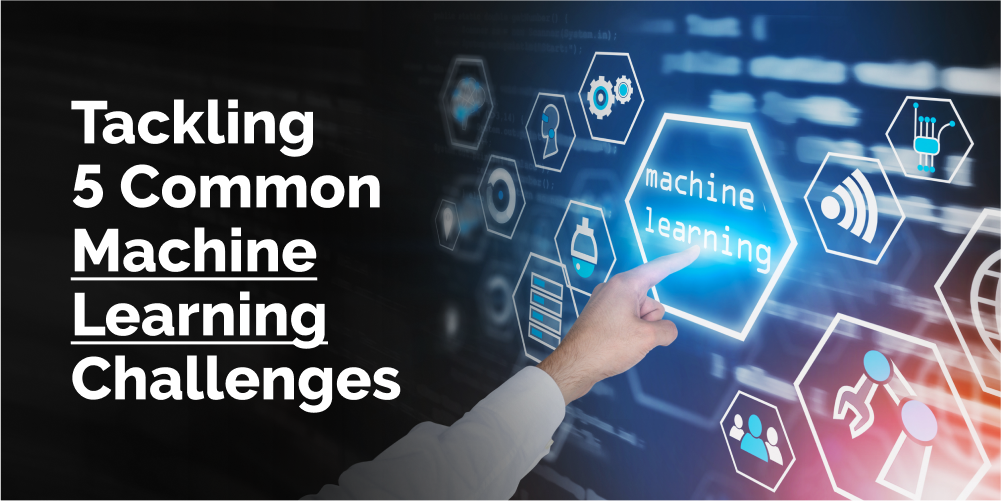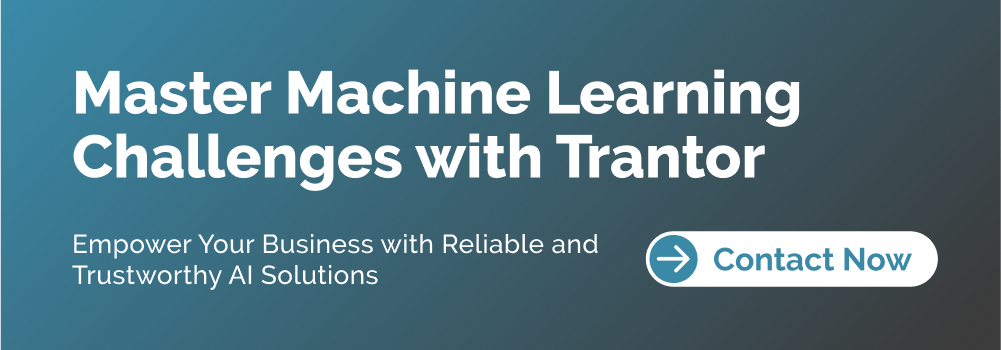Artificial Intelligence, zBlog
5 Common Machine Learning Challenges & How to Solve Them
atif | Updated: April 26, 2024

Introduction
In the ever-evolving realm of artificial intelligence (AI) and machine learning (ML), the pursuit of developing robust and reliable models is a constant challenge. As these advanced technologies continue to permeate various industries, understanding and addressing common pitfalls has become crucial for leveraging their full potential. This comprehensive guide delves into five prevalent machine learning challenges and provides practical solutions to help you navigate these obstacles with confidence.
1. Overfitting: When Models Become Too Familiar

Overfitting is a fundamental issue in machine learning, where a model becomes overly specialized to the training data, resulting in poor generalization to new, unseen data. This phenomenon can lead to inaccurate predictions, compromising the model’s real-world performance.
Causes:
- Complex models with excessive parameters
- Limited training data
- Prolonged training times
Solutions:
- Regularization techniques: L1 (Lasso) or L2 (Ridge) regularization helps reduce model complexity and prevent overfitting.
- Cross-validation: Splitting data into training and validation sets allows for monitoring model performance and early stopping when overfitting occurs.
- Data augmentation: Increasing the diversity of training data through techniques like image transformations or synthetic data generation can improve generalization.
- Ensemble methods: Combining multiple models (e.g., bagging, boosting) can reduce overfitting by averaging out individual model biases.
2. Imbalanced Data: Addressing Skewed Class Distributions

In many real-world scenarios, the distribution of classes in the training data is imbalanced, with one class significantly outnumbering the others. This imbalance can lead to biased models that favor the majority class, resulting in poor performance of minority classes.
Causes:
- Inherent class imbalance in the problem domain
- Lack of representative data for minority classes
Solutions:
- Resampling techniques: Oversampling minority classes or undersampling majority classes can balance the class distributions.
- Class weighting: Assigning higher weights to minority classes during training can compensate for imbalance.
- Synthetic data generation: Techniques like SMOTE (Synthetic Minority Over-sampling Technique) can generate synthetic data for minority classes.
- Ensemble methods: Combining models trained on different subsets of the data can improve overall performance.
3. Feature Engineering: Extracting Meaningful Representations

Effective feature engineering is crucial for machine learning models to learn meaningful patterns from raw data. Inadequate or irrelevant features can lead to poor model performance, while well-engineered features can significantly improve accuracy and interpretability.
Causes:
- Lack of domain knowledge
- Automated feature selection limitations
- Curse of dimensionality (high-dimensional data)
Solutions:
- Domain expertise: Leveraging domain knowledge to identify relevant features can greatly enhance model performance.
- Feature selection techniques: Methods like filter methods (e.g., correlation analysis), wrapper methods (e.g., recursive feature elimination), and embedded methods (e.g., regularization) can help select relevant features.
- Feature extraction: Techniques like Principal Component Analysis (PCA) or autoencoders can extract meaningful low-dimensional representations from high-dimensional data.
- Feature engineering pipelines: Automating feature engineering processes through pipelines can streamline the workflow and ensure reproducibility.
4. Data Quality Issues: Garbage In, Garbage Out

Machine learning models are highly dependent on the quality of the input data. Noisy, inconsistent, or incomplete data can severely impact model performance, leading to inaccurate predictions and unreliable decisions.
Causes:
- Measurement errors or sensor malfunctions
- Human errors in data entry or annotation
- Missing values or outliers
Solutions:
- Data cleaning and preprocessing: Techniques like handling missing values, removing duplicates, and filtering outliers can improve data quality.
- Data validation: Implementing checks and constraints to ensure data integrity and adherence to expected formats and ranges.
- Robust data pipelines: Establishing automated pipelines for data ingestion, cleaning, and preprocessing can minimize human errors and ensure consistency.
- Anomaly detection: Identifying and handling anomalies or outliers through techniques like isolation forests or autoencoders.
5. Interpretability and Explainability: Understanding the Black Box

As machine learning models become increasingly complex, understanding their decision-making process and the factors influencing their predictions becomes a significant challenge. Lack of interpretability and explainability can hinder trust, adoption, and regulatory compliance in critical domain
Causes:
- Complex models with non-linear relationships
- High-dimensional data
- Lack of transparency in model internals
Solutions:
- Interpretable models: Using inherently interpretable models like decision trees, linear models, or rule-based systems can provide insights into model behavior.
- Model-agnostic techniques: Methods like SHAP (SHapley Additive exPlanations), LIME (Local Interpretable Model-agnostic Explanations), or counterfactual explanations can provide post-hoc explanations for complex models.
- Visual analytics: Techniques like saliency maps, activation atlases, or feature importance visualizations can help interpret model decisions.
- Causal inference: Identifying causal relationships between features and model outputs can enhance interpretability and enable more reliable decision-making.
Conclusion
By addressing these common machine learning challenges, organizations can unlock the true potential of AI and harness its power to drive innovation, optimize processes, and gain a competitive edge. However, navigating these challenges requires deep expertise and a strategic approach.
At Trantor, we specialize in helping businesses overcome machine learning obstacles and leverage the transformative power of Artificial Intelligence. Our team of experts combines cutting-edge techniques with industry-specific knowledge to develop reliable, interpretable, and high-performing machine-learning models tailored to your unique needs.
Partner with us to unlock AI’s true potential and empower your business with trustworthy and impactful solutions. Reach out to our experts today and embark on a journey towards mastering machine learning challenges and driving innovation within your organization.




